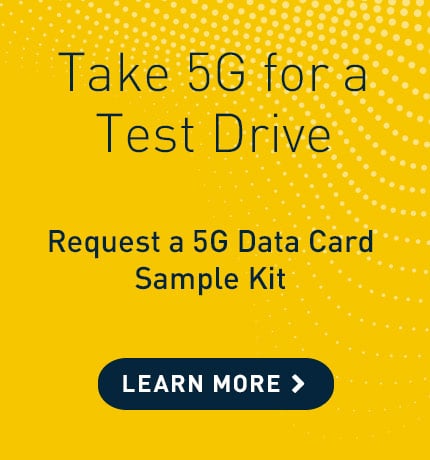What Is 5G NR?

5G has set a new standard for mobile communications with many new approaches, including opening the spectrum above 6 GHz, previously unusable by cellular services.
The mobile network technology has begun operations using Long-Term Evolution (LTE) infrastructure to support non-stand-alone (NSA) 5G. It’s on the way to complete stand-alone (SA) architecture that doesn’t rely on 4G.
The radio access technology (RAT) 3GPP developed for 5G created a two-frequency range system to distinguish radio technologies:
- FR1, which operates below 6 GHz
- FR2, which includes bands above 24 GHz and into the high-frequency range above 50 GHz
3GPP has dubbed 5G’s new air interface 5G New Radio (NR). Like LTE, the term describes wireless technologies that enable speeds, features and capabilities. In June 2016, the first 5G NR specifications were part of 3GPP’s RAN Evolution of LTE documented in Release 14. 3GPP fast-tracked these specifications in 2017 to enable non-stand-alone technologies to begin operating as soon as possible.
This meant major improvements in existing 4G cellular networks, such as LTE-Advanced and LTE-Advanced Pro. These enhancements enable LTE to support sub-6 GHz 5G and faster, more reliable wireless networks.
How Does 5G NR Work?
5G utilizes orthogonal frequency-division multiplexing (OFDM), a waveform modulation technique also used by LTE and IEEE 802.11 (Wi-Fi).
The technology gives 5G enhanced flexibility for a multitude of use cases. It enables 5G to support diverse spectrum bands, including mmWave, with far higher available bandwidth. Specialized technologies like scalable subcarrier spacing and massive multiple-input multiple-output (MIMO) are necessary for radio beam steering and forming to mitigate mmWave propagation challenges.
OFDM’s waveform principle is ideal for radio operations in highly fragmented spectrum availability conditions present in most countries. According to EDN Network, it uses a “digital multi-carrier modulation method” in which “a large number of closely spaced orthogonal sub-carrier signals are used to carry data on several parallel streams or channels.” Information is transmitted across several parallel narrow bands instead of a single wide band.
3 Application Areas for 5G NR
- Enhanced mobile broadband (eMBB) for data-intensive applications like HD streaming video, edge computing, computer vision, gaming and other streaming uses.
- Ultrareliable and low-latency communications (URLLC)for critical applications like command and control functions in autonomous robotics, drones and vehicles and remote control in health care and manufacturing services.
- Massive machine-type communications (mMTC)support massive IoT, connecting millions of sensors and low-powered devices at a large scale.
Bridging 4G LTE and 5G NR Networks
Large-scale, commercial 5G networks are beginning to achieve useable coverage. Major telecom players have been making serious strides with deployments due to Dynamic Spectrum Sharing (DSS). DSS allows a connected device to use a single frequency band in 4G LTE and 5G through an allocation scheme based on the device’s needs and available RAT resources.
DSS has allowed operators to provide 5G service while upgrading their RANs. Operators can calibrate spectrum resource allocation more in sync with user demand for 5G.
Despite initial reliance on LTE architecture, 5G NR is not backward-compatible and represents a leap forward for cellular technology.
The push for LTE network enhancements connected 15 billion IoT devices in 2015. It began delivering gigabit speeds in some limited applications in 2018. Because of these advances, 5G NR has already started to provide eMBB and URLLC services from non-stand-alone networks.
However, to come alive, 5G’s revolutionary service enablement power needs stand-alone (SA) 5G networks.
In April 2019, China Telecom, State Grid and Huawei announced that the group of companies concluded the first successful live power slice test based on a 5G SA network. Within days, China Mobile also announced a first-of-kind live 5G SA network test with Huawei and Baidu.
According to GSA, over 20 providers had launched 5G SA low- and mid-band networks by the end of 2021. The number is expected to double in 2022.
Choose Telit
Telit is the global leader in IoT and high-speed cellular mobile broadband enablement. Our enterprise-grade hardware, connectivity and platforms are at the heart of the devices and systems that transform business.
Editor’s Note: This blog was originally published on 23 May 2019 and has since been updated.
